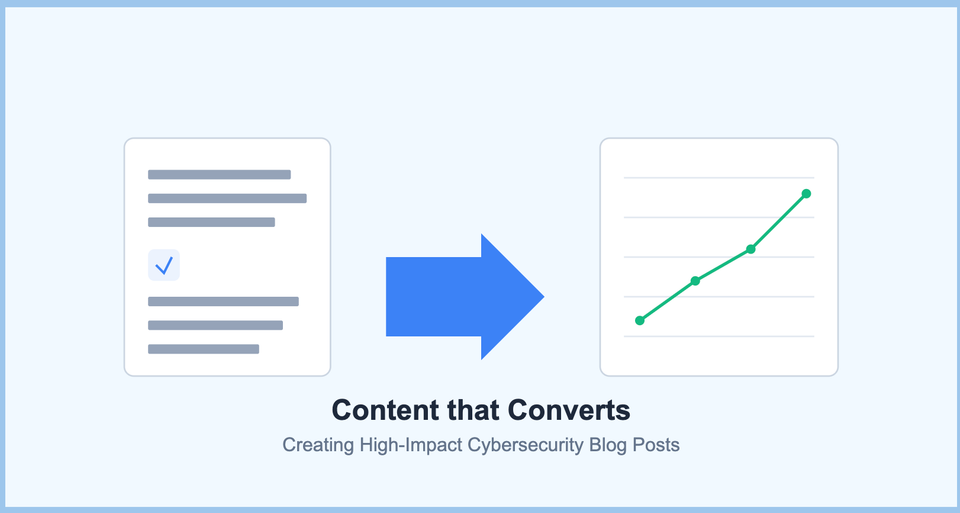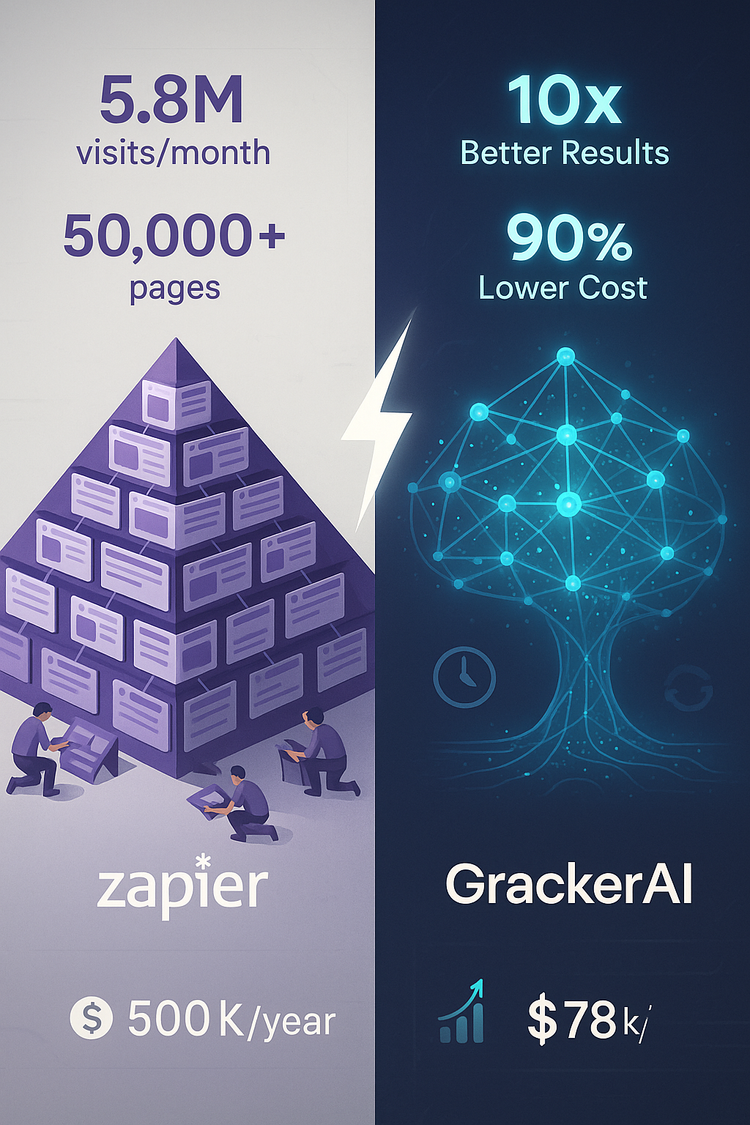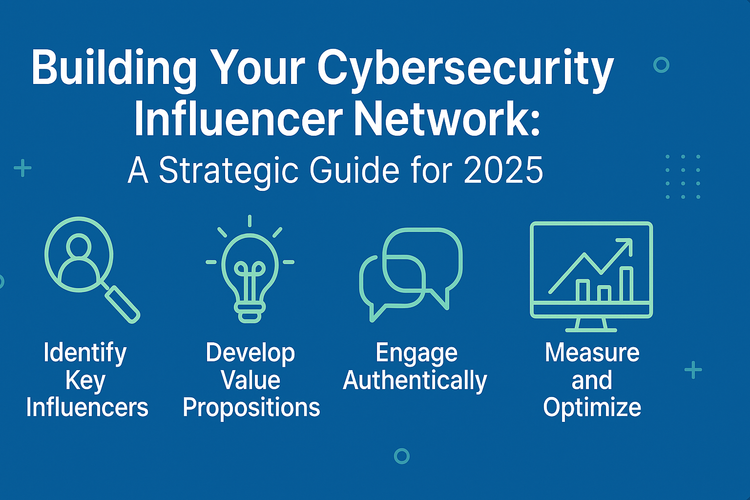Content that Converts: The Ultimate Guide to Crafting High-Impact Cybersecurity Blog Posts

Introduction: The Power of Strategic Cybersecurity Content
In today's digital landscape, where cyber threats evolve at breakneck speed, creating compelling cybersecurity content isn't just about sharing information—it's about driving action. Whether you're marketing security solutions, building thought leadership, or generating qualified leads, your blog content needs to do more than just inform; it needs to convert.
This comprehensive guide will walk you through the process of creating cybersecurity blog posts that resonate with both technical and business decision-makers while driving meaningful conversions. Let's dive in.
Understanding Your Dual Audience
The key to high-converting cybersecurity content lies in understanding and addressing your dual audience effectively.
Technical Decision Makers (TDMs)
Technical decision-makers form the backbone of your cybersecurity audience. Here's what they're looking for:
- Technical Depth: Detailed explanations of security architectures, implementation processes, and technical specifications
- Proof of Concept: Real-world implementation examples and technical validation
- Performance Metrics: Specific data about security effectiveness, system performance, and technical ROI
- Integration Details: Information about compatibility, deployment requirements, and technical prerequisites
💡 Pro Tip: Include code snippets, configuration examples, or architecture diagrams to provide immediate practical value to your technical readers.
Business Decision Makers (BDMs)
Business decision-makers need content that translates technical capabilities into business value:
- Business Impact: Clear connections between security measures and business outcomes
- Risk Management: Understanding of threat landscapes and mitigation strategies
- Cost-Benefit Analysis: Clear ROI calculations and business case justifications
- Competitive Advantage: How security investments drive business growth and market differentiation
🎯 Key Insight: According to recent studies, 73% of B2B buying decisions involve both technical and business stakeholders. Your content needs to speak to both audiences effectively.
Crafting Headlines That Command Attention
Your headline is your first—and sometimes only—chance to grab your reader's attention. Here's how to make it count:
The Formula for High-Converting Headlines
- Specific Problem + Clear Solution + Measurable Outcome
Bad Example:
"Understanding Modern Cybersecurity Challenges"
Good Example:
"Zero Trust Implementation Guide: How Financial Services Cut Data Breaches by 82% in 90 Days"
- Use Power Words and Numbers
Bad Example:
"Better Security for Cloud Applications"
Good Example:
"7 Battle-Tested Strategies to Strengthen Cloud Security: A CISO's Playbook"
📊 Data Point: Headlines with numbers generate 36% more engagement in cybersecurity content.
Creating Compelling Opening Paragraphs
Your opening paragraph needs to hook readers immediately while establishing the relevance and urgency of your topic.
The Perfect Opening Formula
- Start with a Hook
Recent ransomware attacks have cost enterprises an average of $4.62 million per incident. But what's more alarming is that 60% of these attacks exploited vulnerabilities that had patches available months before the breach.
- Establish the Problem
For CISOs and security teams, staying ahead of patch management isn't just an IT challenge—it's a business imperative that directly impacts the bottom line.
- Preview the Solution
In this guide, we'll explore how leading enterprises are using automated patch management systems to reduce their attack surface by 73% while cutting operational costs by 45%.
Structuring Technical Content for Maximum Impact
The Pyramid Approach
Structure your content in layers of increasing technical depth:
- Top Layer: Executive summary and business impact
- Middle Layer: Technical overview and strategic implications
- Bottom Layer: Detailed technical specifications and implementation guides
Example Structure:
## The Business Case for Zero Trust Architecture
[Business impact, cost savings, risk reduction]
## Understanding Zero Trust Principles
[Technical overview, key components, architecture basics]
## Implementation Deep Dive
[Detailed configuration steps, code examples, best practices]
🔑 Best Practice: Use collapsible sections or "click to expand" features for detailed technical content to keep the article scannable while providing depth when needed.
Strategic CTAs That Drive Action
Contextual CTA Placement
Place CTAs strategically throughout your content based on the reader's journey:
- Early Stage (10-20% through)
Download our Zero Trust Architecture Blueprint
[Perfect for readers still in the research phase]
- Mid-Content (40-60% through)
Get a Free Security Assessment
[For readers showing deep interest in the topic]
- End of Content (80-100% through)
Schedule a Demo with Our Security Experts
[For readers who've consumed most of your content]
📈 Performance Data: Contextual CTAs placed within content generate 47% more conversions than static sidebar CTAs.
Visual Elements That Enhance Understanding
Types of Visuals for Cybersecurity Content
- Security Architecture Diagrams
- Network topology visualizations
- Security control frameworks
- Attack surface mappings
- Data Visualizations
- Threat landscape trends
- Security metrics dashboards
- ROI calculations
- Process Flows
- Incident response procedures
- Implementation roadmaps
- Security assessment workflows
Measuring and Optimizing Performance
Key Performance Indicators (KPIs)
Track these metrics to measure content effectiveness:
- Engagement Metrics
- Average time on page: Target >4 minutes
- Scroll depth: Aim for >70% completion
- Social shares: Industry benchmark >50 shares
- Conversion Metrics
- CTA click-through rate: Target >2.5%
- Resource download rate: Aim for >5%
- Demo request rate: Industry average 1-3%
- Quality Metrics
- Technical accuracy score (peer review)
- Reader feedback ratings
- Sales team content usage rate
Conclusion: Building Your Content Strategy
Creating high-converting cybersecurity blog posts is both an art and a science. By following these guidelines and continuously optimizing based on performance data, you can create content that not only educates but drives meaningful business results.
Remember these key takeaways:
- Balance technical depth with business value
- Use data and visuals to support your points
- Place strategic CTAs based on reader journey
- Continuously measure and optimize performance
Ready to Transform Your Cybersecurity Content?
Learn how GrackerAI can help you create high-converting cybersecurity content at scale. Schedule a Demo →



